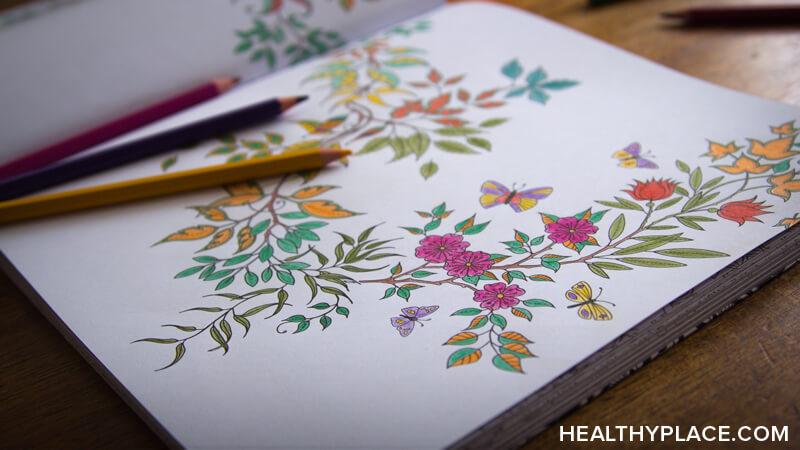Using Art for PTSD to Help You Cope Really Works

Did you know that using art for posttraumatic stress disorder (PTSD) can help you cope with the symptoms of PTSD?
Complex posttraumatic stress disorder as a result of childhood abuse is often a challenge to deal because as a child you didn't have the language to express what you were feeling. Now, as an adult, it can remain difficult to identify and name feelings, but expressing your feelings through artwork can help to give voice to what is going on inside of you.
For a long time, I thought I just had no range of feelings. All I ever felt was numb and disconnected from the rest of the world. So disconnected, in fact, that I'd sit in therapy and tell my therapist horrific stories of my childhood while smiling my way through what I was telling her. I had learned a long time ago that it wasn't safe to express my feelings, so I separated myself from them. The trouble with that, though, is when you disconnect from the bad feelings, you don't have access to genuinely feeling the good feelings either.
How Art for PTSD Helps You Cope
Despite my therapist's best attempts to help me connect with my feelings, the fear I had related to the storm I knew that was going on deep down inside of me held me back. Finally, one day, she handed me a box of crayons and a piece of paper. She wanted me to do some art for my PTSD. I laughed and was a tad irritated because I felt she was treating me like a child.
Determined to help me get in touch with my feelings, my therapist insisted I at least try to draw what I was feeling inside. Greatly annoyed at the exercise, I picked up the box of crayons. Before I knew it, I was sobbing and all of the hurt that had been lurking below the surface for so long had been poured out on the paper in the form of a black demon hovering over a little girl who was clearly terrified and crying. That box of crayons helped me put into picture form what I was never able to find the words for.
When you use art to express the trauma you've lived through, you give voice to what you may have never had the words for. It allows you to portray what goes on inside of you in a visual way that not only helps you to see it but also helps those who care about you to understand you better.
In addition, expressing your traumatic experiences through art helps to make addressing the trauma a little less scary. Instead of facing it head-on, you make it external from yourself through the art that you create.
How to Use Art for PTSD Coping
There are many modes of art for PTSD coping that you could use to express your feelings or trauma, such as coloring, writing, and painting. Below are some specific suggestions to help you get started:
- Draw a place that makes you feel safe. This picture can serve as a grounding tool to remind you that you are safe in today when you're flashing back to yesterday.
- Use modeling clay to create the shape of how you see your trauma. Once it is formed, smash the clay as a metaphoric reminder that you have the power to not let the past control your present.
- Try finger painting. Finger painting helps you get in touch with all of your senses, which helps keep you grounded as you express your feelings through the paint.
Whatever medium you choose, give doing art for PTSD a chance. I learned it's not just for kids. Ever since that day in my therapist's office, I turn to artwork when I'm frustrated with how I'm feeling and can't find the words. You may just discover it gives voice to your feelings too.
APA Reference
Powell, T.
(2019, July 5). Using Art for PTSD to Help You Cope Really Works, HealthyPlace. Retrieved
on 2025, December 1 from https://www.healthyplace.com/blogs/traumaptsdblog/2019/7/using-art-for-ptsd-to-help-you-cope-really-works